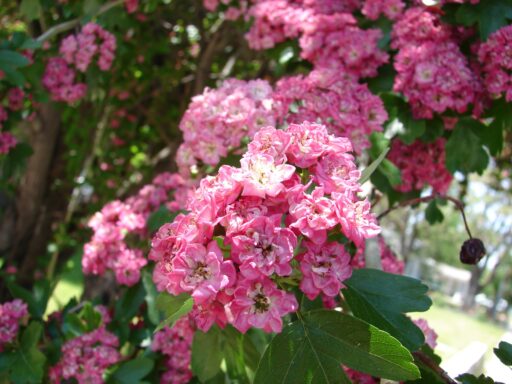Novels are my bedtime reading. I especially like very long novels—so that there’s an already familiar world I can re-enter each night. So when I decided to take Swann’s Way off my shelf and up to bed with me, I knew I was in for months of Proust’s unique world created in the seven volumes of Remembrance of Things Past.
The edition I own is C. K. Scott Moncrieff’s 1928 translation. (Newer editions translate Proust’s title, À la recherche du temps perdu, as In Search of Lost Time.) Decades had passed since I last read these volumes. So in effect I was entering their world afresh.
When I was about a couple weeks into Swann’s Way, my husband asked me one morning at breakfast “Are you enjoying Proust?” I smiled a yes, so he asked, “What do you like about it?” “Its sentences,” I said. What I meant was sentences like this one:
Combray at a distance, from a twenty-mile radius, as we used to see it from the railway when we arrived there every year in Holy Week, was no more than a church epitomising [sic] the town, representing it, speaking of it and for it to the horizon, and as one drew near, gathering close about its long, dark cloak, sheltering from the wind, on the open plain, as a shepherd gathers his sheep, the woolly grey backs of its flocking houses, which a fragment of its mediaeval ramparts enclosed, here and there, in an outline as scrupulously circular as that of a little town in a primitive painting.
The narrator, I should note, is unnamed throughout À la recherche, and in these early chapters is recalling his childhood. Combray is where his great-aunt lived. Our introduction to the town here is via the church, which metaphorically turns into a shepherd, with his flock as the houses thereabout.
Some fifteen pages later the narrator takes us inside this church (where he and his family go to Mass)—to give language to the visual glories of its stained-glass windows.
There was one among them which was a tall panel composed of a hundred little rectangular windows, of blue principally, like a great game of patience of the kind planned to beguile King Charles VI; but, either because a ray of sunlight had gleamed through it or because my own shifting vision had drawn across the window, whose colours died away and were rekindled by turns, a rare and transient fire—the next instant it had taken on all the iridescence of a peacock’s tail, then shook and watered in a flaming and fantastic shower, distilled sand dropping from the groin of the dark and rocky vault down the moist walls, as though it were along the bed of some rainbow grotto of sinuous stalactites that I was following my parents who marched before me, their prayer-books clasped in their hands; a moment later the little lozenge windows had put on the deep transparence, the unbreakable hardness of sapphires clustered on some enormous breastplate; but beyond which could be distinguished, dearer than all such treasures, a fleeting smile from the sun, which could be seen and felt as well here, in the blue and gentle flood in which it washed the masonry, as on the pavement of the Square or the straw of the market-place; and even on our first Sundays, when we came down before Easter, it would console me for the blackness and bareness of the earth outside by making burst into blossom, as in some springtime in old history among the heirs of Saint Louis, this dazzling and gilded carpet of forget-me-nots in glass.
Whew! A sentence of 267 words, many of which are metaphors: the “game of patience,” the “transient fire,” a “peacock’s tail,” a “flaming and fantastic shower,” a “rainbow grotto of sinuous stalactites,” “sapphires” on a breastplate: the sun’s “smile,” the “gentle flood,” and finally “this dazzling and gilded carpet of forget-me-nots in glass.” Proust seems literally to be painting the window with his words.
Here the forget-me-nots are metaphorical. Later, as the narrator describes his nearly daily Combray walks with his family, they become literal:
And so it was that, at the foot of the path which led down to this artificial lake, there might be seen, in its two tiers woven of trailing forget-me-nots below and of periwinkle flowers above, the natural, delicate, blue garland which binds the luminous, shadowed brows of water-nymphs; while the iris, its swords sweeping every way in regal profusion, stretched out over agrimony and water-growing kind-cups the lilied sceptres, tattered glories of yellow and purple, of the kingdom of the lake.
While the flowers here are literal, we see them through metaphors—of kingship: “swords…in regal profusion,” “scepters,” the lake’s “kingdom.”
These walks give Proust many more opportunities to caress the natural world with his language. Hawthorn shrubs are among his favorite objects for this. First, they’re the subject of a series of extended metaphors from the arts:
I returned to my hawthorns… Inspiring me with that rapture which we feel on seeing a work by our favorite painter quite different from any of those that we already know, or, better still, when some one has taken us and set us down in front of a picture of which we have hitherto seen no more than a penciled sketch, or when a piece of music which we have heard played over on the piano bursts out again in our ears with all the splendour and fullness of an orchestra, my grandfather called me to him, and, pointing to the hedge of Tansonville, said: “You are fond of hawthorns; just look at this pink one; isn’t it pretty?”
Then the prose goes on to extol these pink hawthorn flowers “in their holiday attire”—
But it was attired even more richly than the rest, for the flowers which clung to its branches, one above another, so thickly as to leave no part of the tree undecorated, like the tassels wreathed about the crook of a rococo shepherdess, were every one of them ‘in colour,’ and consequently of a superior quality…
Enamored as I am of Proust’s luscious language in this book, I was curious what Wikipedia would have to say about Swann’s Way. Well, the entry simply summarizes the plot—but I don’t think the plot is really what the novel is about. Savoring all the sentences I’ve quoted above, and so many more, I wonder if Proust’s writing style itself becomes here the prose’s real subject.
Peggy Rosenthal has a PhD in English Literature. Her first published book was Words and Values, a close reading of popular language. Since then she has published widely on the spirituality of poetry, in periodicals such as America, The Christian Century, and Image, and in books that can be found here.





